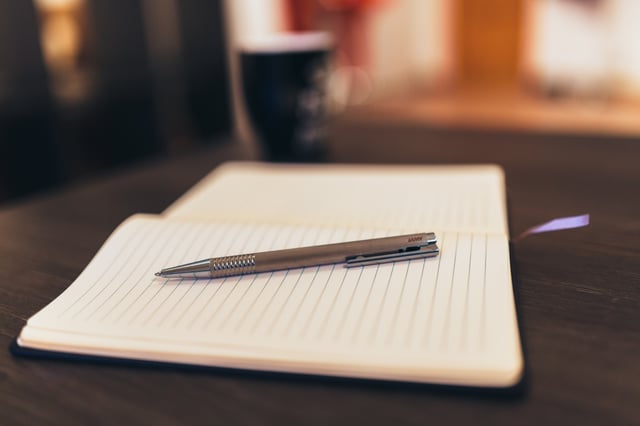I'm grilling a burger.
I'm scanning BuzzSumo for articles.
I'm kinda listening to Parks and Recreation in the background (multi-tasking at its finest), and I'm thinking about how obsessed I used to be with reading every new "it book" on the scene...
Have you read the new Seth Godin?
How about Stephen Pressfield's "War of Art?"
"The Power of Habit?" Oh yeah, changed my life!
If you run in entrepreneurial circles, you're familiar with the rhetoric. Some reading suggestions are entertained for keeping up appearances, and some come from a place of genuine curiosity. No matter where they sit on your actual interest level, chances are you have a hefty list of reading to-do's (and you probably wonder how to get through them all).
Why Every Marketer Needs a Reading Method

Admittedly, most of my current reading material comes from blogs. But five years ago, my reading list was a mile long, and so were my library fines. When you read A LOT, you come to appreciate your local library.
I consistently had one problem. No, not the fines – I always rationalized those by telling myself my checks contributed to the community.
The problem was I never implemented ANYTHING I read – for very long. It was always, "on to the next book." With no system in place for organizing all of the valuable information I was reading, I always seemed to be forgetting the ideas the books helped generate.
The good news?
I've since learned from my mistakes, and now you can too.
Below, we'll discuss four key practices for retaining what you read. Put them together, and voila: You've got a method!
The Marketer's Reading Method
Step 1: Slow Down
No, seriously – slow down. There has been much speculation about the benefits of speed reading in recent years, with marketing gurus like Tim Ferris singing its praises.
However, recent studies suggest, the practice is completely counter-productive. According to the Psychological Science in the Public Interest, there is significant trade-off between speed and accuracy. Meaning, the less time someone spends on the material, the less likely they are to truly understand it.
While most of us are not practitioners of speed reading, we are probably all guilty of scanning books. Perhaps, we've simply become accustomed to scanning from our abundant smartphone usage. Regardless, a 30-minute read of a short passage is exceedingly more valuable than a quick one.
Step 2: Make a Personal Connection
Ever notice how you can't recall the dates and events you memorized for U.S. History? On the flip side, consider how easily you might retain every detail (unfortunately) of the day your dog died?
There is a HUGE clue here, and it speaks to how we process information:
Information that is stored WITH emotion is stored long-term.
Information that is stored WITHOUT emotion is stored short-term.
Eric Jensen, author of Brain-Based Learning, mentions that our brains can only REALLY learn something if that something has meaning to us.
Make this theory work for you by consciously attempting to personally connect with what you are reading.
Ask yourself questions like:
- Why am I reading this?
- What do I hope to learn?
- Can I relate this to anything that has happened in my own life?
Step 3: Keep a Journal

Ryan Scott, chief content strategist at Lean Labs, swears by his handy journal. Noting that it's helped him organize information that has later informed blog articles, teaching topics, and speeches.
The idea is to create the habit of jotting down thoughts, quotes, and important pieces of information as you read. By taking short breaks to write things down, you reinforce memory via repetition.
Ryan even takes things one step further:
He rewrites the material as if he's explaining it to another person. This way, he doesn't just memorize it, he really learns it. Try referencing the book name and page number as well; so you can jump to detailed information if you want to expand upon something later. Review your journal at the end of every week to really let things sink in.
Step 4: Return to The Theme
Without a larger theoretical framework, details are just details – they have no meaning! Reinforce your recall by periodically reacquainting yourself with the book's overarching theme (or the major theme of each chapter).
This idea comes to us from Mortimer Adler and Charles Van Dore, authors of How to Read a Book. Adler and Van Dore refer to a book's theme as its pulse (i.e. the lifeblood of its vitality). A comparison that could only be envisioned by a true lovers of books!
Don't Just Read – Learn
Employ the above four tips while reading the next bestseller on your list, and let us know how it goes. Oh yeah, and don't watch Parks and Recreation or grill burgers while reading. Unless you're reading one of my blog articles – then it's OK.
Got any personal tips for reading comprehension mastery?
Tell us in the comments below.
Ashley is a content writer and brand developer. After graduating with a degree in print-journalism, Ashley’s storytelling skills took her from the bizarre world of on-camera acting to the practice courts of NBA basketball players to the virtual meetings of inbound marketers. Today she specializes in building memorable brand voices online, with a focus on the travel & tourism, e-commerce and tech industries.